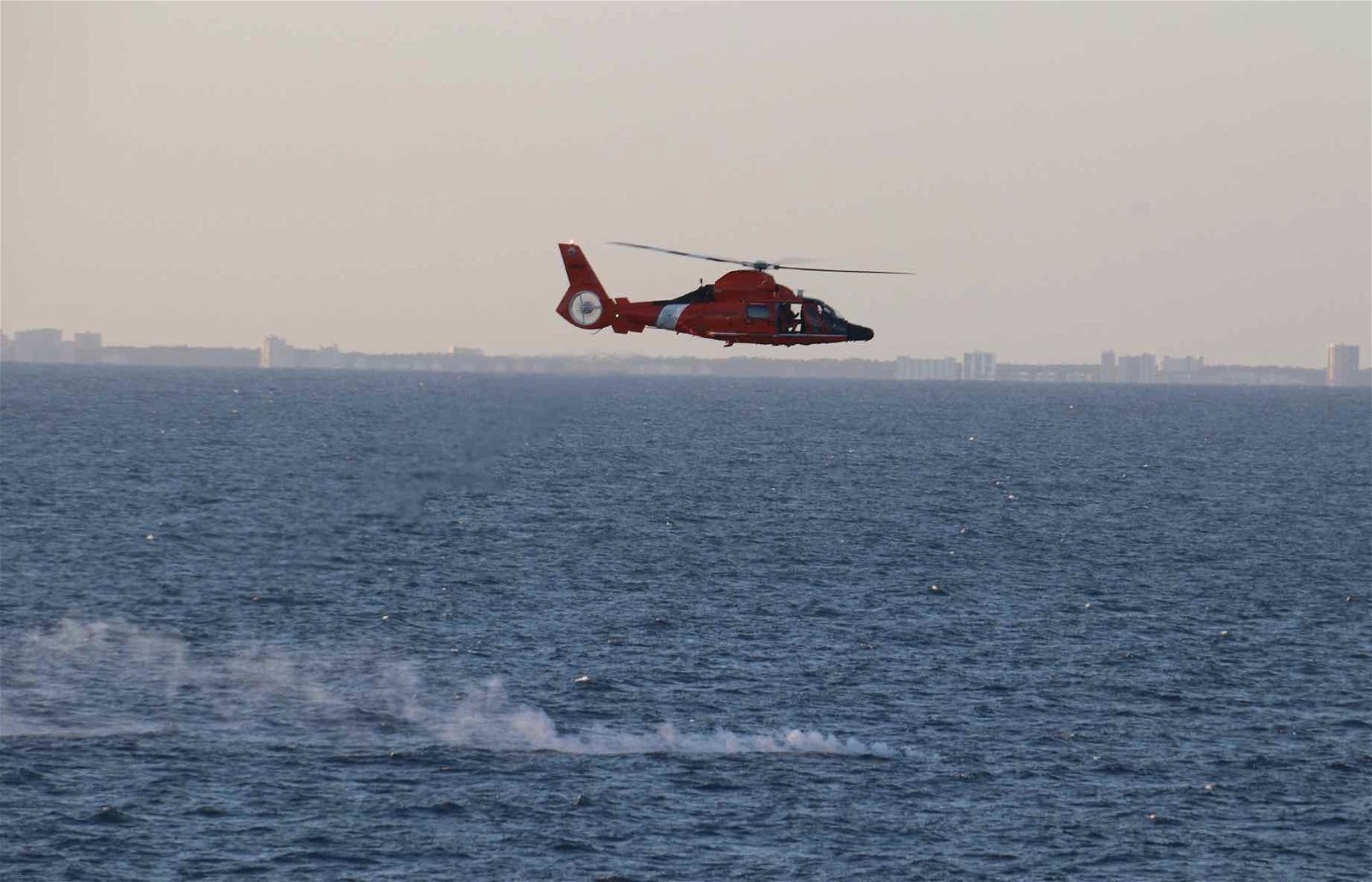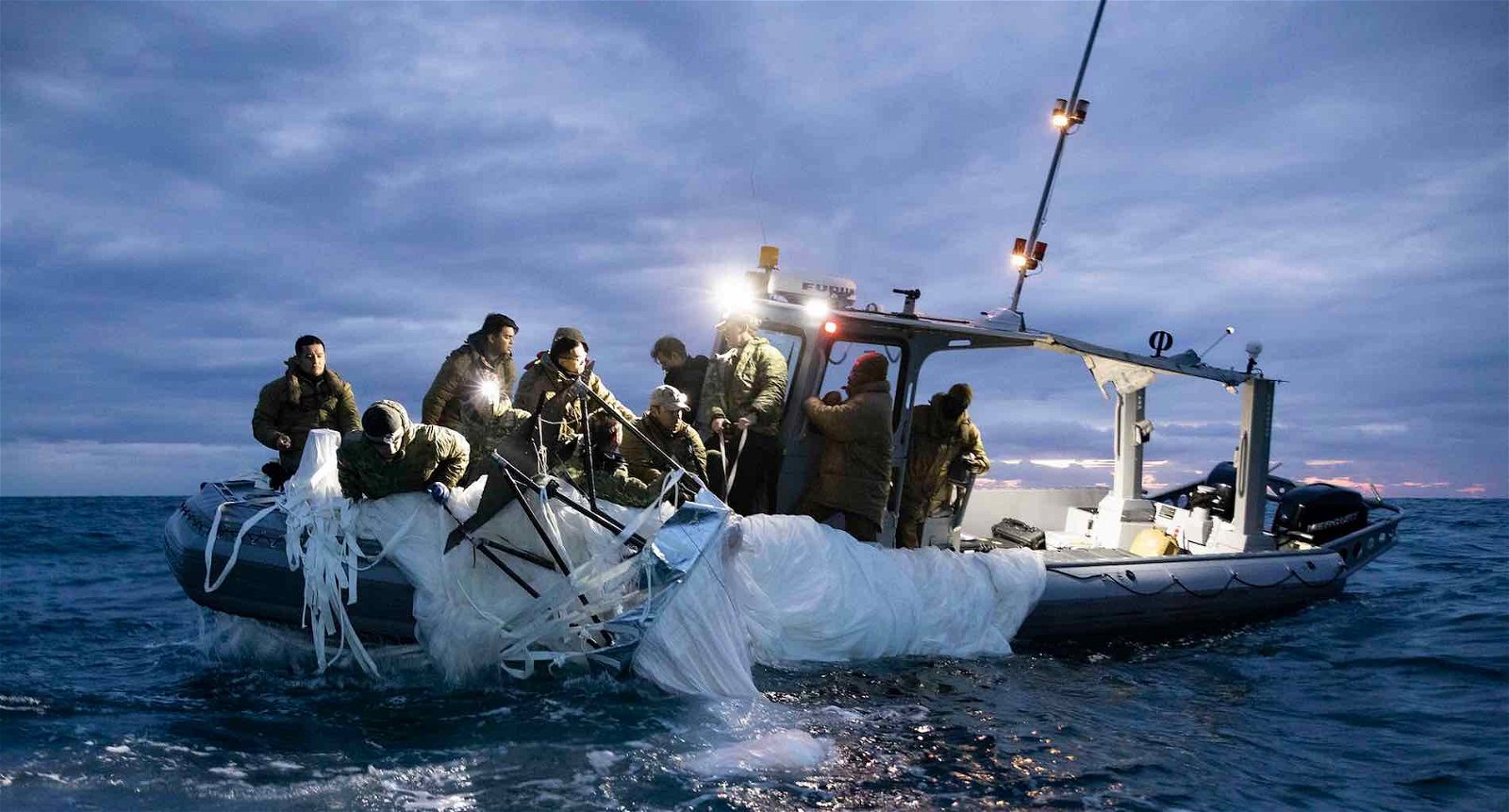The Chinese spy balloon that passed over the United States in February before being shot down off the South Carolina coast is believed to have possessed power generation capabilities able to support advanced radar technology, according to classified U.S. intelligence documents leaked online.
The prominent solar panels visible on the payload the balloon carried were likely capable of producing enough electricity to power synthetic aperture radar, according to a document originating from within the U.S. National Geospatial-Intelligence Agency (NGA) reviewed by The Washington Post.
The document is among a batch that allegedly leaked on a Discord chatroom operated by Massachusetts Air National Guard member Jack Teixeira.


Synthetic Aperture Radar, or SAR, is a form of active data collection that involves a sensor capable of producing its own energy, which then measures and records the amount that is reflected off the Earth. A key component of the technology involves the use of a shorter antenna that sequences the data it collects and combines it to simulate the results of a much larger device.
Not only does this provide higher-resolution data, but also reduces the amount of space required. With a greater degree of responsiveness than optical imagery, SAR systems can also peer through clouds, in addition to generating better imagery at night. SAR can also detect objects positioned below waterproof cloths, tarpaulins, or other thin materials.
The NGA document relating this information said the balloon shot down in February was likely able to produce as much as 10,000 watts of solar power, which could sufficiently power such a device if fitted to the airship’s dangling payload.


Based on imagery and other data, the balloon’s payload is already known to have included a range of technologies that included sensors, a 1.2-meter parabolic dish, and even a possible mast antenna. To date, the full extent of the technologies the balloon possessed has not yet been revealed, along with whether U.S. intelligence agencies have been able to assess all those capabilities from the wreckage obtained during recovery operations off the South Carolina coast.
In addition to the information about the Chinese balloon that transited the U.S. in February, the recently leaked documents also convey that U.S. officials had been aware of four incidents involving suspected spy balloons, including the passage of one of the devices over a U.S. Carrier Strike Group operating in the Pacific Ocean that had been previously unreported.
The documents also reveal that codenames were assigned to the suspected spy balloons that were borrowed from famous members of organized crime in the 20th century.
Teixeira, who has been identified as the apparent source of the classified document leak, was arrested on April 13 by FBI agents at his family’s home in Dighton, Massachusetts, according to a DOD statement.


On Monday, Deputy Pentagon Press Secretary Sabrina Singh said the Pentagon continues “to convene daily meetings to examine the scope and scale of this disclosure, as well as ensure that appropriate mitigation measures are being taken” as an interagency investigation into the leaks remains underway.
During the press conference, Singh appealed to members of the media to exercise caution when reporting on the documents, as well as the use of imagery related to them, which may contain sensitive information that could potentially impact U.S. national security.
“We’re certainly concerned about the contents of these documents being circulated on social media,” Singh said.
“So yes, we are concerned about these documents. We feel that of course Russia and China could use this to their advantage,” she added, “but we also feel confident in our outreach to partners and allies and working with them as this continues.”
Micah Hanks is the Editor-in-Chief and Co-Founder of The Debrief. He can be reached by email at micah@thedebrief.org. Follow his work at micahhanks.com and on Twitter: @MicahHanks.

